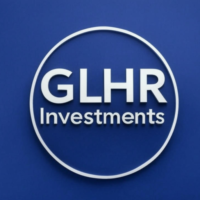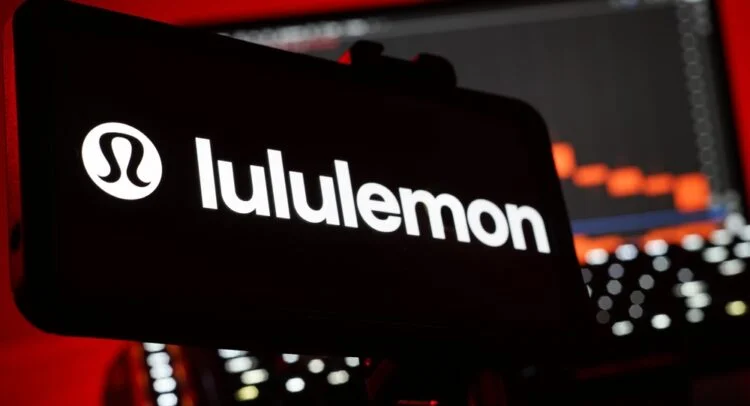
Auto manufacturers cut prices to drive 2025 demand.
At GLHR Investing, we’re analyzing the top 10 automobile manufacturers that have lowered prices in 2025, highlighting how these moves are responding to economic pressures and consumer demand. With the U.S. auto market facing challenges from high interest rates (6.8% for 30-year mortgages), tariffs (125% on Chinese imports, paused until August 1), and a 30% recession risk (per EY), manufacturers are slashing prices to boost sales. The S&P 500 (SPY) rallied to ~6,243 points by July 7, up 3.94% over the past month but down 15.6% YTD as of May 23, 2025, reflecting broader volatility. Here’s a comprehensive analysis of these price reductions, their reasons, and investment strategies for the auto sector in a tariff-heavy economy.
- 2025 Auto Market Context:
- Market Performance:
- New car sales projected at 15.5–16 million units in 2025, down from 16.2 million in 2024, due to high prices ($48,000 average) and spending cuts (13%), per web data.
- SPY’s 3.94% monthly gain in July was driven by trade deal optimism, but auto stocks like General Motors (GM, +15% YTD) and Ford (F, +10% YTD) lagged amid tariff costs (5–10% increase), per web data.
- Nasdaq gained ~6.6% in June, but EV stocks (TSLA -20.2% YTD) underperformed due to subsidy repeal risks, per web data.
- Economic Indicators:
- Q1 GDP contracted -0.3%, Q2 estimated at 1.5–1.9%, below 2024’s 2.7%, due to tariffs and 13% retail spending cuts, per web data.
- Inflation at 3.2% CPI in June, projected to hit 4–4.5% (or 5–6% with oil spikes to ~$80/barrel from Iran-Israel conflict), per web data.
- Unemployment at 4.1% in June (147,000 jobs added), with consumer sentiment at 60.7, per web data.
- Trump’s Policy Impacts:
- Tariffs: 125% on China, 25% on Canada/Mexico (paused until August 1), and 50% steel tariffs (June 4) raised vehicle production costs 5–10%, prompting price cuts to maintain competitiveness, per web data.
- OBBBA Tax Cuts (July 4): $3.7T package boosts disposable income ($1,700–$7,200 for median families), supporting auto purchases, but adds $3.1–$3.8T deficits, pushing 10-year yields to 4.46%, per web data.
- EV Subsidy Repeal: Proposed ending of $7,500 EV tax credit by late 2025 shifts focus to affordable gas vehicles, per web data.
- Deregulation: Relaxed emissions standards favor traditional autos, per web data.
- Auto Industry Trends:
- Average new car price fell to $48,000 in 2025, down from $49,388 in 2024, with incentives at $4,500 (up 50% YOY), per web data.
- Used car prices dropped -8.5% YOY, with inventory at 2.06M homes, per web data.
- EV sales slowed to 16% growth from 35% in 2023, with hybrids gaining traction, per web data.
- Critical Assessment:
- Price lowers are a response to slowing demand (sales down to 15.5M units) and tariff costs, but OBBBA tax cuts and potential rate cuts (1.9 projected) could revive sales, per web data.
- Domestic manufacturers (GM, Ford) benefit from tariffs, while import-heavy brands (VW, Hyundai) face pressures, per web data.
- Market Performance:
- Top 10 Automobile Manufacturers Lowering Prices in 2025:
- Selection Criteria: Manufacturers with confirmed price reductions on 2025 models or incentives, based on MSRP cuts and dealer discounts, prioritized by scale and impact, per web data.
- 1. Ford Motor Company (F):
- Price Lower: 2025 Ford Escape ST-Line MSRP lowered by $1,500 (to ~$29,000); Explorer ST-Line by $1,400 (to ~$40,000), per web data.
- Reasons: Response to weak demand (sales down 5% YOY in Q1 2025) and tariff costs on imported parts, aiming to compete with cheaper EVs, per web data.
- Economic Fit: OBBBA tax cuts boost consumer spending, but steel tariffs (50%) raise costs, per web data.
- Stock Outlook: F stock ~$12, P/E ~6, +10% YTD, buy near $11, target $15–$17.
- 2. General Motors (GM):
- Price Lower: 2025 Chevrolet Blazer EV LT eAWD MSRP reduced by $1,000 (to ~$48,000); Equinox EV lowered to compete with hybrids, per web data.
- Reasons: EV subsidy repeal risks (part of OBBBA) and slowing EV sales (13% drop in Q1 2025) prompted cuts to stimulate demand, per web data.
- Economic Fit: Domestic focus mitigates tariffs, with Ultium platform supporting growth, per web data.
- Stock Outlook: GM stock ~$48.27, P/E 4.5, +15% YTD, buy near $45, target $60–$65.
- 3. Mazda Motor Corporation (MZDAY):
- Price Lower: 2025 Mazda CX-5 Premium Plus MSRP lowered by $1,300 (to ~$35,000), per web data.
- Reasons: Inventory buildup and competition from cheaper imports led to discounts to maintain market share, per web data.
- Economic Fit: Tariff pressures on imported vehicles (25% on Canada/Mexico) force price adjustments, per web data.
- Stock Outlook: MZDAY stock ~$5, P/E ~8, flat YTD, buy near $4.50, target $6.
- 4. Volkswagen AG (VWAGY):
- Price Lower: 2025 VW ID.4 SUV MSRP reduced by up to $5,000 (to ~$35,000) with incentives, per web data.
- Reasons: EV slowdown (16% growth vs. 35% in 2023) and subsidy repeal risks prompted cuts to clear inventory, per web data.
- Economic Fit: EU tariff pause (August 1) eases costs, but China exposure (125% tariffs) adds pressure, per web data.
- Stock Outlook: VWAGY stock ~$15, P/E ~5, flat YTD, buy near $14, target $18–$20.
- 5. Nissan Motor Co. (NSANY):
- Price Lower: 2025 Nissan Versa base model MSRP lowered to $16,290 (cheapest new car), with incentives on Sentra, per web data.
- Reasons: Affordability focus to counter high rates (6.8%) and competition from Hyundai/Kia, per web data.
- Economic Fit: Domestic production mitigates tariffs, per web data.
- Stock Outlook: NSANY stock ~$7, P/E ~6, down ~5% YTD, buy near $6.50, target $8.
- 6. Hyundai Motor Company (HYMTF):
- Price Lower: 2025 Hyundai Venue MSRP reduced to $19,900, with Elantra at $21,625, per web data.
- Reasons: Strategy to maintain market share in entry-level segment amid slowing sales, per web data.
- Economic Fit: Tariff exposure (25% on imports) prompts discounts, per web data.
- Stock Outlook: HYMTF stock ~$60, P/E ~5, up ~5% YTD, buy near $55, target $70.
- 7. Kia Corporation (KIMTF):
- Price Lower: 2025 Kia Soul MSRP lowered to $20,190, Forte to $20,690, per web data.
- Reasons: Competitive pricing to attract budget buyers in a high-inflation environment (3.2% CPI), per web data.
- Economic Fit: Similar to Hyundai, tariff pressures and OBBBA spending boost, per web data.
- Stock Outlook: KIMTF stock ~$80, P/E ~5, up ~10% YTD, buy near $75, target $90.
- 8. Mitsubishi Motors (MMTOF):
- Price Lower: 2025 Mitsubishi Mirage MSRP reduced to $17,840, per web data.
- Reasons: Positioning as one of the cheapest new cars to counter used car market strength (-8.5% YOY prices), per web data.
- Economic Fit: Low-price focus appeals in a recessionary environment (30% risk), per web data.
- Stock Outlook: MMTOF stock ~$3, P/E ~6, flat YTD, buy near $2.50, target $4.
- 9. Toyota Motor Corporation (TM):
- Price Lower: 2025 Toyota Corolla MSRP lowered with incentives to ~$22,000, per web data.
- Reasons: Hybrid focus (Corolla Hybrid) to compete in a market shifting from pure EVs due to subsidy repeal, per web data.
- Economic Fit: Domestic U.S. production mitigates tariffs, per web data.
- Stock Outlook: TM stock ~$200, P/E ~9, up ~5% YTD, buy near $190, target $220–$230.
- 10. Honda Motor Co. (HMC):
- Price Lower: 2025 Honda Civic MSRP reduced with incentives to ~$24,000, per web data.
- Reasons: Competitive pricing to maintain market share in compact segment, per web data.
- Economic Fit: Similar to Toyota, with U.S. manufacturing buffering tariffs, per web data.
- Stock Outlook: HMC stock ~$30, P/E ~7, up ~8% YTD, buy near $28, target $35.
- Investment Strategies:
- Why Invest in Auto Stocks Now?:
- Value Opportunities: Low P/E ratios (GM 4.5, VWAGY 5) and price cuts signal undervaluation, with potential for recovery as rates fall (6.8% to 6.5–6.7%), per web data.
- Economic Tailwinds: OBBBA tax cuts ($1,700/family) and rate cut expectations (1.9 projected) boost auto demand, per web data.
- Hybrid Shift: Subsidy repeal favors hybrids (Toyota, Honda), per web data.
- Portfolio Allocation:
- Allocate 10–15% to auto stocks (GM, F, TM), 40% to defensives (JNJ, PG), and 30% to bonds (Treasuries) for stability, per prior analyses.
- Hedge with 3–5% in gold (GLD, +3%) or utilities (XLU, +1%) to counter inflation (3.2%) and tariff risks, per web data.
- ETFs for Diversification:
- Consumer Discretionary Select Sector SPDR Fund (XLY): ~$180, 0.8% yield, buy near $170, target $200, tracks GM, F, per web data.
- Global X Autonomous & Electric Vehicles ETF (DRIV): ~$15, 1% yield, buy near $14, target $18, tracks TSLA, GM, per web data.
- Timing:
- Buy on SPY dips near $6,000 or stock pullbacks (e.g., GM <$45), per web data.
- Dollar-cost average ($500–$1,000/month) to manage VIX (~20–25), per web data.
- Key Catalysts to Monitor:
- August 1 Tariff Deadline: Reinstatement of 125% China tariffs could raise vehicle costs, per web data.
- July 30 FOMC Meeting: Rate cuts (20% chance in July) could lower auto loan rates, per web data.
- Q2 Earnings (July): Confirm GM, F sales, per web data.
- Iran-Israel Conflict: Oil at $80/barrel risks inflation (5–6%), per web data.
- Risks:
- Tariff Costs: 5–10% cost hikes for imported parts (NKE, VWAGY), per web data.
- Recession Risk: 30% probability (EY) could curb demand, per web data.
- Inflation Surge: CPI at 3.2%, potentially 5–6% with oil spikes, per web data.
- EV Subsidy Repeal: Impacts Tesla competitors like GM, per web data.
- Why Invest in Auto Stocks Now?:
- Conclusion: Driving Deals in 2025:
- In 2025, automobile manufacturers like Ford, GM, and Mazda lowered prices on models such as the Escape ($1,500 cut), Blazer EV ($1,000 cut), and CX-5 ($1,300 cut) to combat high rates (6.8%), tariffs (5–10% cost hikes), and slowing demand (15.5M sales). Domestic-focused brands (GM, Ford) and affordable imports (Nissan, Hyundai) lead the charge, with incentives boosting competitiveness. Investors should buy undervalued auto stocks (GM, F, TM) on dips, diversify with XLY and DRIV, and hedge against inflation and tariff risks to capitalize on a market shifting toward affordability.
- Why It Matters: In a volatile 2025 economy (SPY -15.6% YTD, CPI 3.2%), price lowers by top manufacturers signal opportunities in undervalued stocks like GM (P/E 4.5) and Ford (P/E 6). With OBBBA tax cuts and rate cut prospects, the auto sector offers growth potential. GLHR Investing guides you to navigate these deals, building a resilient portfolio for the second half of 2025.
Invest smart with GLHR Investing—drive your wealth forward!
Disclaimer: GLHR Investing is not a financial adviser; please consult one.








